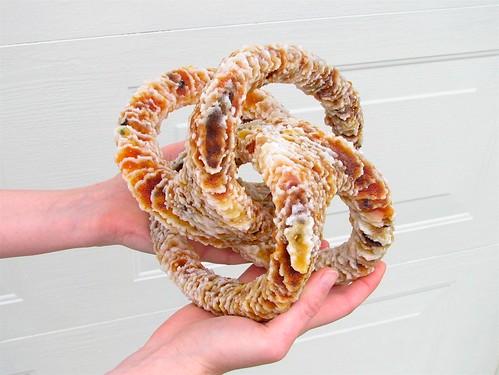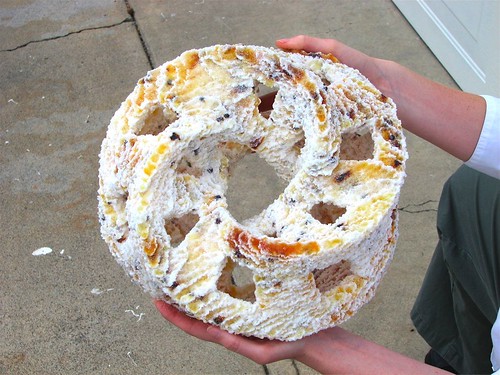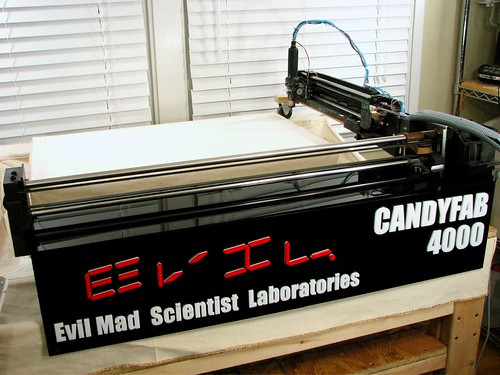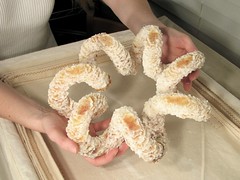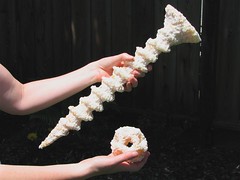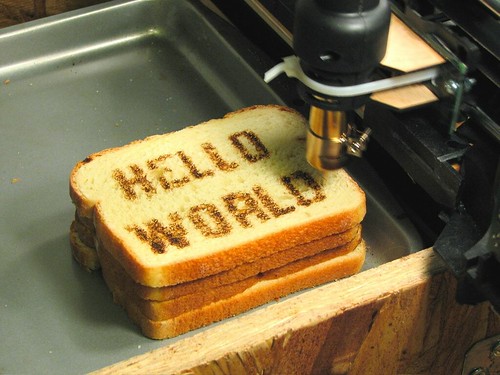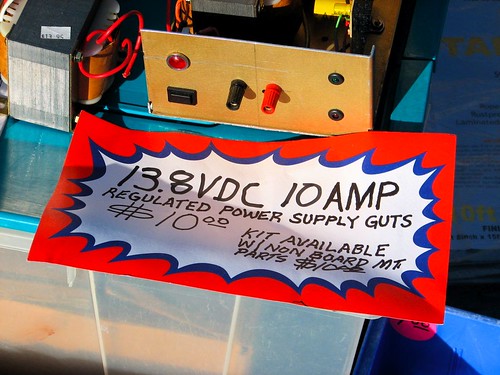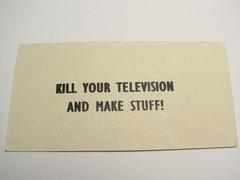 Maker Faire was a smashing success. The big message of the fair was summarized succinctly and stamped on the back of a card we were given: “Kill Your Television and Make Stuff!”
Maker Faire was a smashing success. The big message of the fair was summarized succinctly and stamped on the back of a card we were given: “Kill Your Television and Make Stuff!”
We had a great time in our little prototyping world off in the corner of the Expo hall by SRL. Near us Bathsheba Grossman had her beautiful sculptures, Fab@Home was printing with cheese and frosting, John Guy had his 3D CNC gantry next to his margarita machine, and Lee Krasnow had an entire workshop for his precision puzzle making. We were also by a couple of exhibitors (as opposed to makers): Epilog and Protopulsion, but I have to say, it seemed like the makers all got a lot more traffic than the corporate folks with their tradeshow-style setups. We were all off behind the Tesla coils, which stole our visitors’ attention hourly. Nobody could compete with the Tesla coils when they were running!
We can’t possibly list all of the cool things we saw, and we didn’t see half of the stuff there, but read on for some of the highlights for us.
Continue reading Maker Faire Bay Area 2007 was fantastic!





